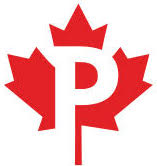
| Name | Value |
|---|---|
| Date of Issue | March 1, 2024 |
| Year | 2024 |
| Quantity | 5,050,000 |
| Denomination |
 PERMANENT™ (P). PERMANENT™ (P).Current monetary value: $0.92. |
| Series | Wildflowers |
| Series Time Span | 2024 |
| Postal Administration | Canada |
| Condition | Name | Avg Value |
|---|---|---|
| No Prices for stamp | ||









This year’s issue in the annual Flowers series includes two stamps featuring the native wildflowers butterfly milkweed (Asclepias tuberosa) and spotted beebalm (Monarda punctata).
These wildflowers are important sources of food for a variety of pollinators, including hummingbirds and insects such as butterflies and bees.
This year’s issue in the annual Flowers series features two native wildflowers – butterfly milkweed (Asclepias tuberosa) and spotted beebalm (Monarda punctata).
Rich with nectar and pollen, the brilliant blossoms of butterfly milkweed (Asclepias tuberosa) and spotted beebalm (Monarda punctata) are abuzz during blooming season, as hummingbirds and insects such as butterflies and bees stop by to feed.
Butterfly milkweed boasts tall, flat-topped clusters of pale to dark orange flowers. Its glossy, lance-shaped leaves – and the leaves of other milkweeds – are the sole source of food for monarch butterfly caterpillars. A fragrant member of the mint family, spotted beebalm is known for its unique and intricate appearance. Whorls of purple-spotted tubular flowers alternate with rings of white to purple leaf bracts at various points along the upper stem. In Canada, the two wildflowers are native only to certain regions of southern Ontario and southwestern Quebec. In Quebec, they are designated as threatened and protected by law.
Also grown commercially, these plants are a good choice for gardens, since they support pollinators and make beautiful ornamental and cut flowers.